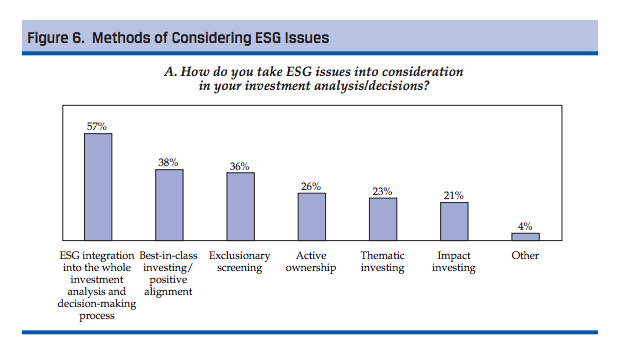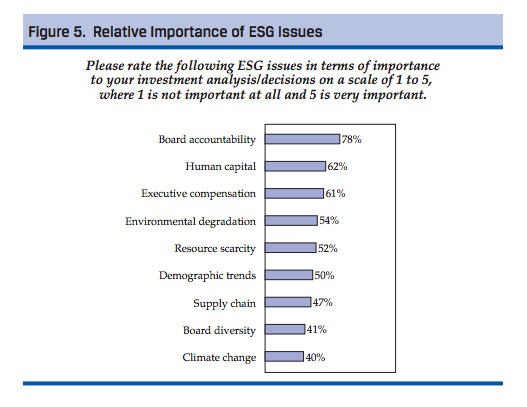How investors should monitor their real world impact on climate related systemic risk
A helpful publication from the CFA Institute on ESG investing has data from a very interesting survey of 44,000 CFA members conducted in 2015. This survey reveals the challenges we face in getting investment professionals to do the kind of robust engagement that could mitigate climate-related systemic risk.
3% of CFA members replied and it is probably reasonable to assume that the 97% who didn’t respond are less engaged on this topic.
But even focusing on those who replied, “active ownership” is a minority strategy: 26% compared to, say, 57% for “integration” (see p29).

Furthermore, if one considers what happens as “active ownership”, a lot of this is likely to be what one informed CIO terms “tea & biscuits” engagement. The language of the report is interesting in this context: “Activism varies in terms of aggressiveness of the approach. Some investors may use publicized and confrontational measures, whereas others may prefer a more discreet approach.”
The highlights are ours and show a deep-rooted bias withing the mainstream investment community against robust engagement.
Perhaps even more important is the focus is on climate change since it comes bottom of the list of ESG issues in terms in terms of relative importance, marginally lower than “even” board diversity (see p14).

Together, these two graphics explain a lot of the immunity to change that we see in the global investment community.
The good news is that this data offers a clear baseline for those investors who are willing to acknowledge the gap between “talk” and “walk” and who want to engage in the kind of urgent and assertive supply chain management initiatives (down their own investment supply chains) that could improve performance in a timeframe that is relevant to managing climate related systemic risk. Since this survey could be replicated investor by investor, it gives investor members of CDP, IGCC, IIGCC, INCR and PRI a way to monitor their real impact in society on this critical issue and benchmark themselves in a way which has societal relevance.
How best to do this – ie what strategy is most likely to have most traction down the investment supply chains – should be the urgent focus of investor discussions in 2016.